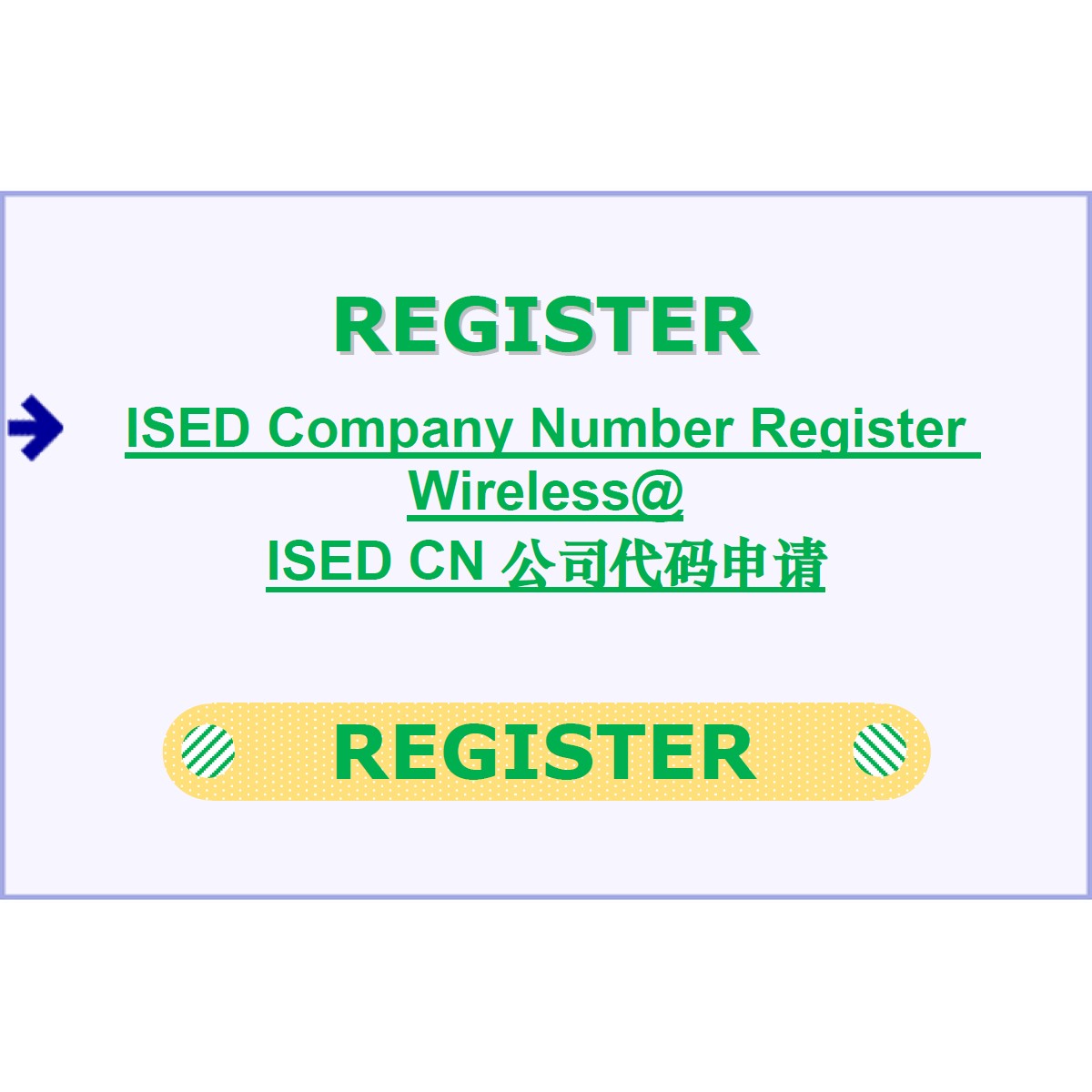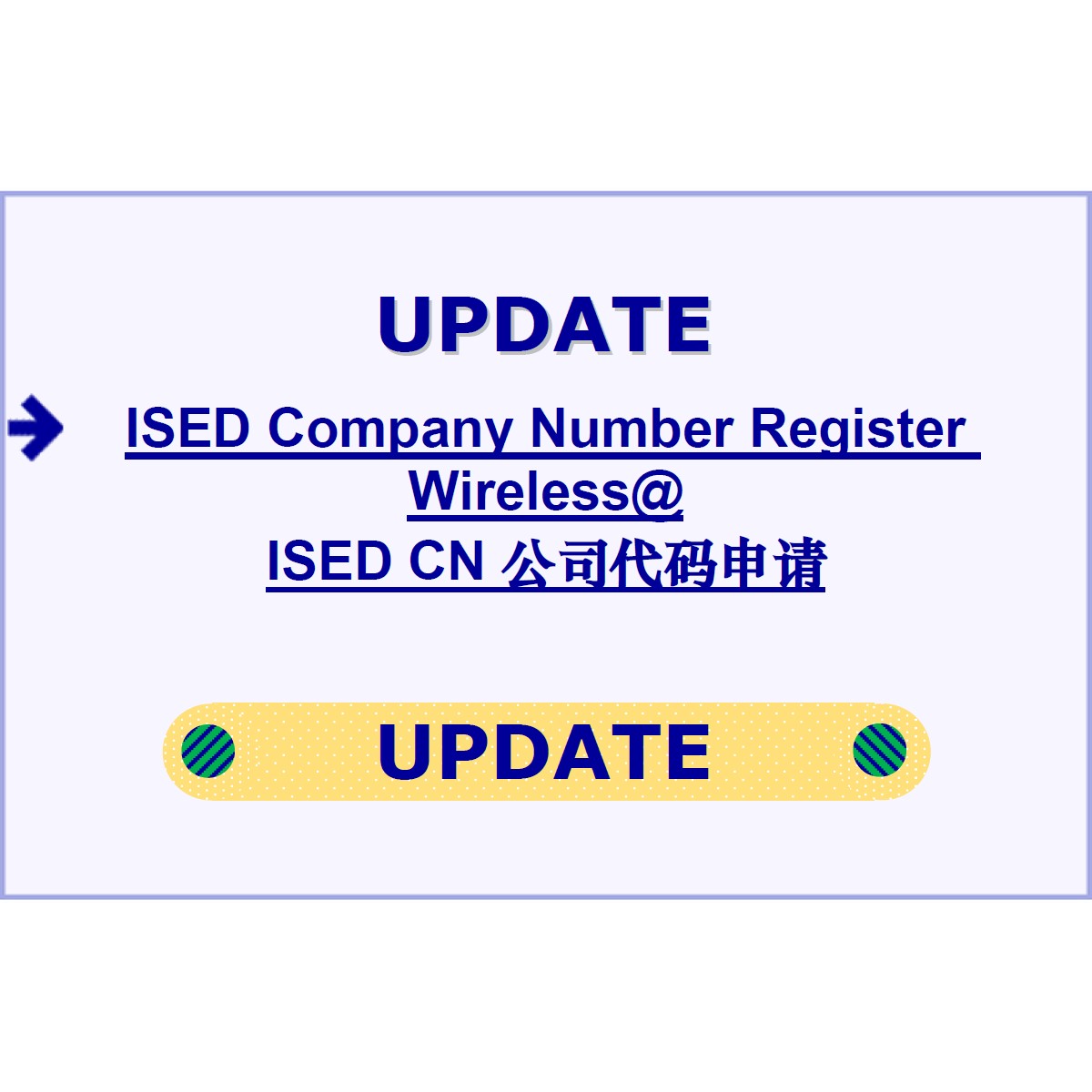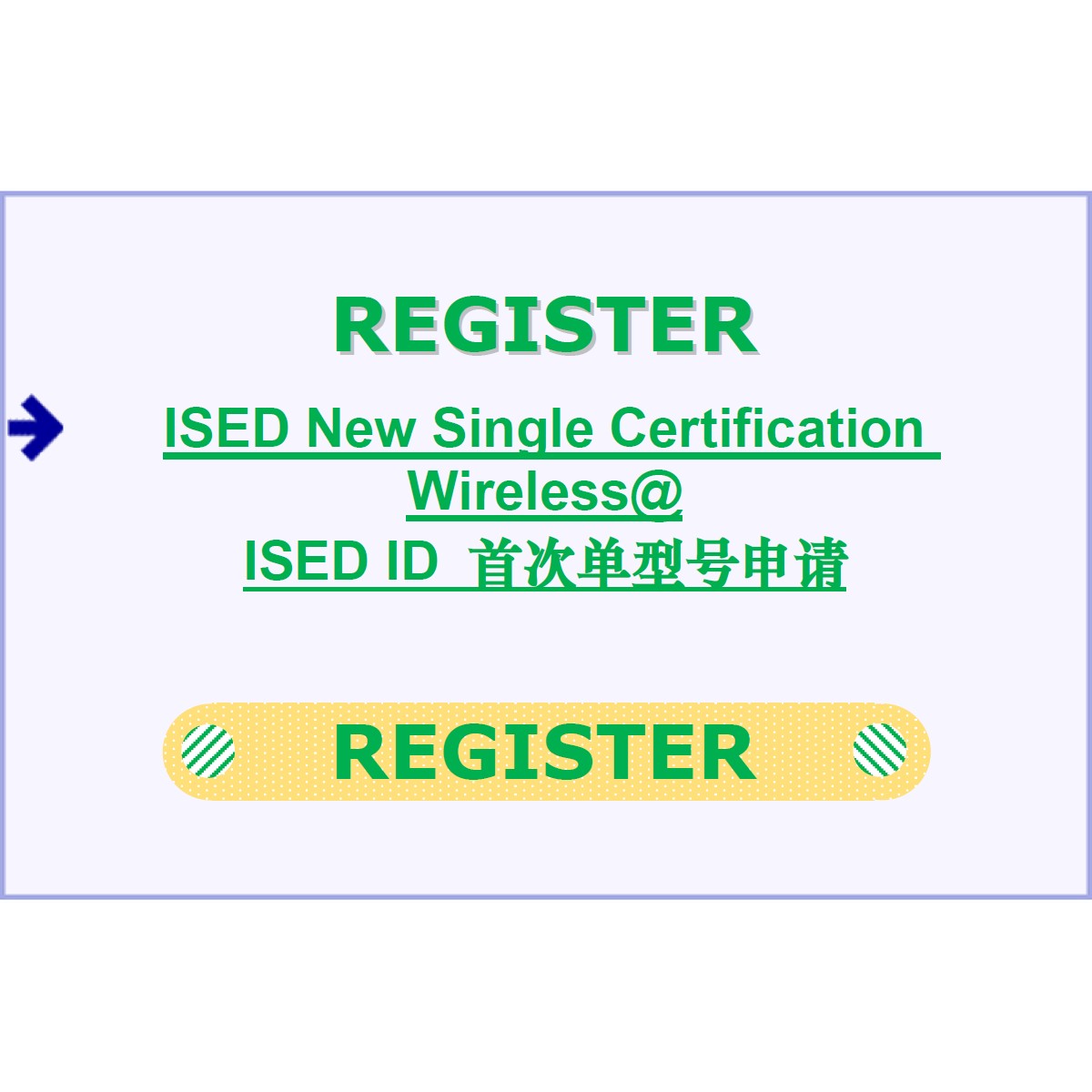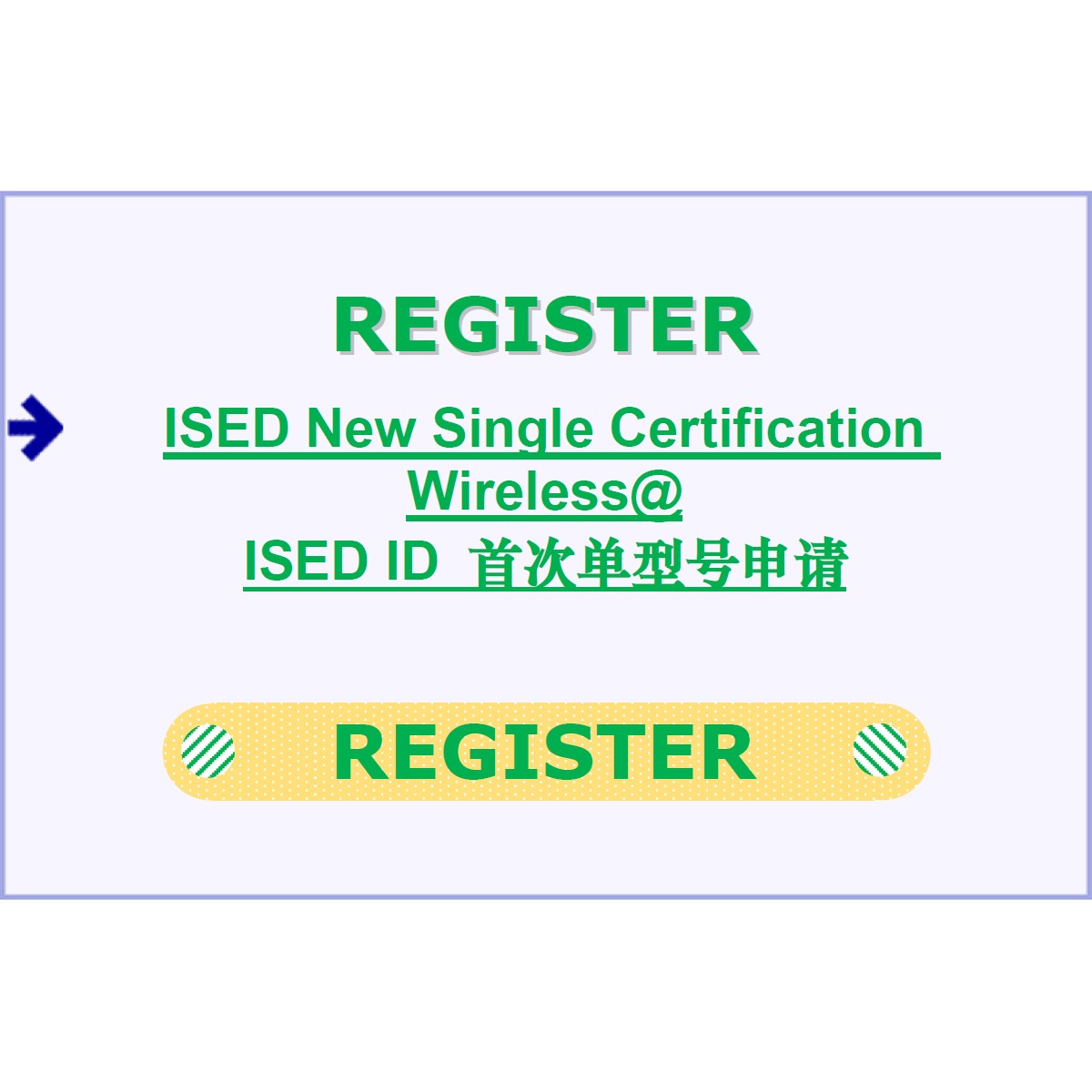Canada ISED Approval Guide for Wireless
ISED Approval Guide
Overview
Single New Certification
Single certification may be granted to radio equipment provided that the equipment model is assigned a unique model number by the manufacturer and certification has never been granted for that model.
Family Certification
Family certification (multiple models) may be granted to many models of radio equipment that are electrically identical, provided that each model is assigned a unique model number by the manufacturer.
Equipment is considered electrically identical if no changes are made to equipment that has been certified or if the changes made to the equipment qualify as Class 1 permissive changes.
There are two possibilities for family certification:
- New Family Certification — If family certification is requested and none of the models in the family has ever been certified.
- Family to a Previously Certified Model — If family certification is requested and at least one model in the family has been certified.
Multiple Listing
Multiple listing of a certified model is required when a manufacturer or distributor wishes to list under its name and unique model number certified equipment of an original equipment manufacturer (OEM).
A model of equipment may be multiple-listed to other manufacturers or distributors based upon the approval granted to the original applicant and certificate holder.
Class II Permissive Change (C2PC)
A reassessment is required when a Class II permissive change is made to previously certified equipment.
A Class II permissive change includes the next modifications:
· hardware modifications to the certified product that do affect fundamental RF characteristics and/or do degrade the unwanted emissions of the product
· modifications to a certified product that do change the RF characteristics, but not beyond the requirements established in the applicable RSS regulations in the original certification
· modifications that do change external or internal mechanical characteristics significantly enough to require new photographs to identify the modified product
· any change to the PMN or HVIN of the certified product
Class III Permissive Change (C3PC)
A reassessment is required when a Class III permissive change is made to previously certified equipment. A Class III permissive change includes the next modifications:
· firmware modifications to a certified product that affect the RF characterstics of a certified product (a new and unique FVIN must be provided for such modifications)
· firmware modifications to enable new frequency bands but without hardware modification (A new and unique FVIN must be provided for such modifications.)
Class IV Permissive Change (C4PC)
A reassessment is required when a Class IV permissive change is made to previously certified equipment.
A Class IV permissive change includes the next modifications:
· a certified module(s) (LMA or MA) that is integrated into a new host product, which results in changes to the original reported RF emissions characteristics and/or RF exposure evaluation
· a certified module(s) (LMA or MA) that is integrated into a new host product where a new RF exposure information/evaluation (as per RSS-102) and/or RF emissions information needs to be updated with Innovation, Science and Economic Development Canada (ISED)
Transfer of a Certification
Certification ownership may be transferred from the current owner to a new entity that wishes to assume all of the previous owner’s responsibilities associated with the certificate. To transfer the ownership, the new entity shall send a letter to the Bureau providing a copy of a signed letter from the current certificate holder, authorizing the Department to transfer the ownership from the current owner to the new entity and change the certificate file information to reflect the new owner’s information. The letter must also attest that the equipment covered by the certificate is identical in design and construction to the originally-approved model.
How do I know a product I purchased is certified for Canada?
All certified radio products are listed in Radio Equipment List (REL). You can search the product with various parameters such as the model number or certification number. For details, see RSP-100 for labeling requirements.
What are Test Labs and CBs (Certification Bodies)?
Testing Laboratories and Certification Bodies that are recognized by ISED are listed on ISED website. Testing laboratories test the products according to the required Canadian regulations for radio certification with ISED. Certification Bodies are recognized independent organizations who conduct certification of radio-communication equipment for the purpose of sale in Canadian market.
I have a product that I like to get certified. How can I do it?
Certification of a product requires various steps and documents which are detailed in RSP-100. The product must comply with Canadian regulations and standards. The application can be submitted electronically, using the Equipment Certification Services the Spectrum Management System website. Generally, applicants utilize the expertise of Testing Laboratories and Certification Bodies to obtain certification with Canada.
Which procedure provides guidance on submitting a certification application for radio equipment?
The procedure to apply for radio equipment certification is RSP-100. The Annex A and Annex B forms from RSP-100 must be completed and signed. These Annex forms and other required documents must accompany your application.
What documents do we need to submit for radio certification?
The requirement for documents varies according to the type of application and services required. Please see Annex C of RSP-100 for complete list of document.
Where can the Canadian technical requirements (standards) for radio equipment be found?
The list of radio standards is found on the ISED website.
Is Canadian radio certification required if the device complies with foreign requirements such as FCC?
Yes, Canadian equipment certification is required. All radio equipment intended for Canada shall meet requirements of Canadian procedures and technical standards.
If no Canadian standard exists, how is radio equipment certification obtained?
Certification will not be issued until an applicable standard has been promulgated. Please verify as to the release of radio standards with the manager of equipment standards using the General Inquiry form.
How is Company Number (CN) obtained?
Company numbers can be obtained by creating a new web account through the Spectrum Management System.
- Click on “Register a new Web Account for a new or existing Licensee or Certification/Registration clients or Broadcaster”.
- Under the Equipment Certification and Registration list, select “New Applicant” or “New Agent Applicant” and then click on the “Next” button.
- Fill in the “Web User Information”, “Applicant Information” and “Certification Letter Contact”.
- Review the information and then submit your request.
If you already have a web account, you can request additional company numbers.
- Login to your account
- select “list my application”,
- click on the “Add Client”, which is located to the right of your name at the top of the page.
- Select “New Applicant” and then the “Next” button.
- Fill in the company information and then click on the “Next” button.
- Review the information and then submit your request.
ISED will review the company number request and send the contact listed, an email with the account/company number or further instructions depending on the information received. The issuing of a company number may take a couple of days to complete.
Is “IC:” prefix for certification number still acceptable or it should be “ISED:”?
As per RSP-100, the correct prefix is still “IC:” for the certification number.
What are the fees or listing fees?
The listing fee is $50.00 per model. For complete details, please see TRC-49.
Do we need a Canadian Representative?
An applicant who does not have a Canadian address and contact must provide in writing the identity of a contact representative located in Canada who is capable of responding to enquiries and who can provide post-certification audit samples at no charge to Innovation, Science and Economic Development Canada. The requirement is further detailed in RSP-100.
What does family certification mean?
When multiple product versions (identical or similar products) with unique PMN, HVIN and FVIN combination are certified under one certification number, it is referred to as family certification. Multiple versions can be listed in Radio Equipment List with one application or multiple applications over time. Please see additional requirements for family certification in RSP-100.
What is multiple listing?
When the existing certificate holder or another entity/company (new applicant) requests a new certification number based on existing certification, it is referred to as multiple listing application. Please see additional requirements for multiple listing in RSP-100.
What is required if we modify certified equipment?
When certified equipment is modified, the extent of the modifications will determine the required actions for the client. If the product modifications require notification to ISED, then a reassessment application is required to be submitted. The requirements for reassessment application are provided in detail in the RSP-100.
What is a Class I/II/III/IV Permissive Changes?
Any modifications to a certified product may require recertification with ISED. The various types of modifications are divided into four categories and referred to as Permissive Changes. The requirements for different types of changes to a certified product are detailed in RSP-100.
What is the turn-around time to obtain equipment certification?
ISED completes application according to submitted date and application are normally approved and granted within 14 calendar days provided the submitted application is complete and accurate.
What is the difference between Category I equipment and Category II equipment?
Category I equipment must meet the requirements of the applicable Canadian standard and requires certification. Category II equipment must also meet the requirements of the applicable Canadian standard but is certification exempt. (subsection 4(2) and 4(3) of the Radiocommunication Act and the Radiocommunication Regulations.)
If I want to apply for certification in Canada and my equipment is already certified by the FCC, will Innovation, Science and Economic Development Canada accept the test report that was produced for the FCC?
Innovation, Science and Economic Development Canada will accept a FCC test report with the following conditions:
- The test report must be less than one year old;
- The test report must fulfill all the requirements of the applicable ISED standard.
- If the type of measurement was "radiated", the laboratory who did the testing must have their Test Site (OATS or Anechoic chamber) registered with ISED;
- If the type of measurement was "conducted", the laboratory who did the testing is not required to have their test site registered with ISED;
A cross-reference table must be submitted with the test report to show that the equipment meets all of the applicable Canadian requirements.
△ The above picture and text are from the Internet. If there is any infringement, please contact us in time and we will delete it immediately.
As the first global market access digital platform, BWTCmall.com offers a new and unprecedented online service experience for its many users.
As a technology-driven company, BWTCmall.com is committed to developing a powerful and scalable platform that not only enables global manufacturers to quickly and accurately find the best way to reach the global market, but also to experience cost-effective cutting-edge technology and services. Let the global market access market truly enter a virtuous circle of fairness, objectivity, harmony and win-win.
Please visit the solution for get your best way of testing and certification / approvals to the target market.












